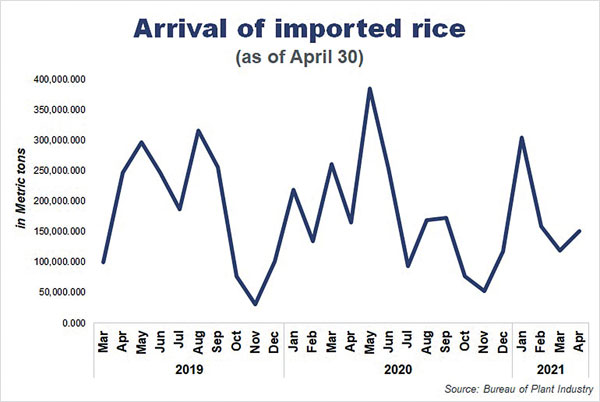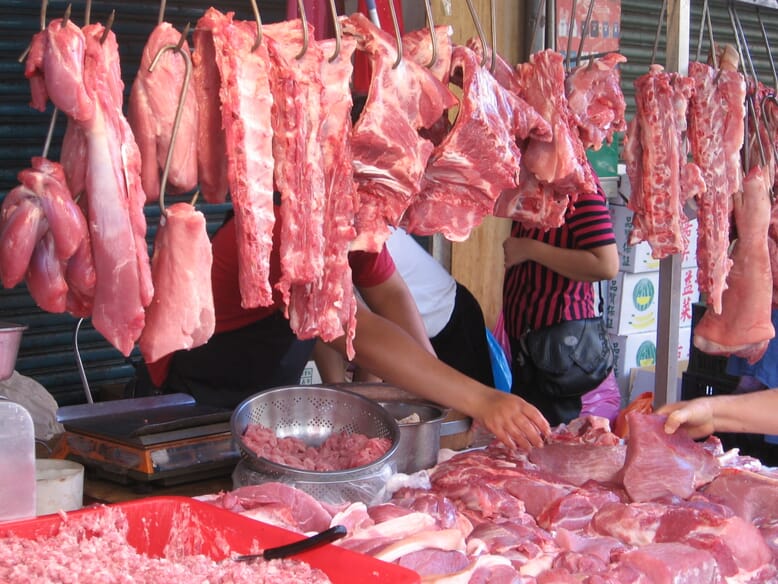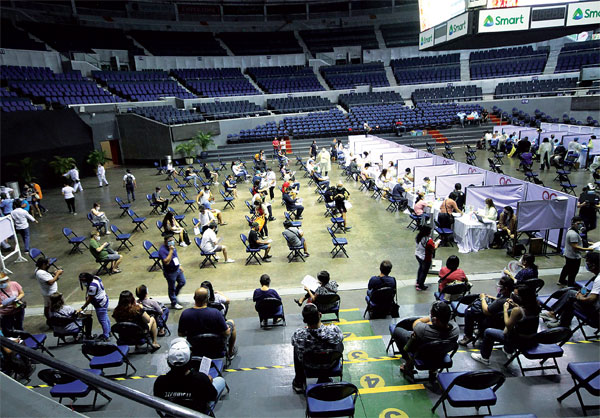Two separate executive orders (EO) were issued on Saturday lowering tariff rates on imported pork and on rice, according to the Department of Agriculture (DA).
DA said in a press statement late Saturday said President Duterte approved the recommendations of the National Economic and Development Authority Board to temporarily reduce the most favored nation (MFN) tariff rates on imported rice and to further modify the MFN tariff rates for imported pork products.
Under EO 135, MFN tariff rates on rice were reduced to 35 percent from 40 percent for in-quota and 50 percent for out-quota for a period of one year.
The statement said the EO cited the need to diversify the country’s market sources, augment supply and maintain prices stable. The move will reduce pressures on inflation given the increase in global rice prices and uncertainties for a steady rice supply in the country.
 The other order, EO 134, amends provisions of previously issued EO 128 that reduced tariff rates on pork for a period of one year at a graduated basis from 30 percent in-quota and 40 percent out-quota to 5 percent in-quota and 15 percent out-quota for the first three months and 10 percent in-quota and 20 percent out-quota from the fourth to the twelfth month.
The other order, EO 134, amends provisions of previously issued EO 128 that reduced tariff rates on pork for a period of one year at a graduated basis from 30 percent in-quota and 40 percent out-quota to 5 percent in-quota and 15 percent out-quota for the first three months and 10 percent in-quota and 20 percent out-quota from the fourth to the twelfth month.
EO 134 now pegs the tariff on pork to 10 percent in-quota and 20 percent out-quota for the first three months and 15 percent in-quota and 25 percent out-quota from the fourth to the 12th month.
The DA quoted the Palace as saying EO 134 was issued“to strike a balance between the objective of making pork products available and affordable and the concerns of all stakeholders especially the recovery of the local hog industry.”
Agricultural lobby group Samahang Industriya ng Agrikultura (SINAG) lauded the EO that adjusted the tariff on pork but criticized the order on rice.
“Like a thief in the night, EO 135 was issued while everyone else was working on the pork tariff compromise. Tariff reduction in rice should have followed the thoroughgoing scrutiny of both the Senate and the House of Representatives,” said Rosendo So, SINAG chair.
The group added with tariff rates on imported pork now adjusted by EO 134, the DA must recall all sanitary and phytosanitary import clearances issued under the recalled EO 128.
So also urged the Bureau of Customs to be guided by the new EO 134.
The Federation of Free Farmers (FFF) decried the lowering of tariffs on rice imports from non-Asean countries, saying the grounds made to do so were “baseless and deceptive” and ill-timed as the EO was issued just before the resumption of Congress today (May 17).
“There is no need to diversify the foreign sources of our rice because, under the Rice Tariffication Law, importers are already free to bring in rice from any country for as long as they pass our quarantine regulations. Aside from Vietnam and other Asean countries, we have been consistently importing from nine other countries including India and Pakistan and more recently China,” said Raul Montemayor, FFF president.
Montemayor said there is no urgent need to augment the country’s rice supply, citing the Philippine Statistics Authority’s data of national rice inventory at 2.08 million tons or only 4.5 percent lower than last year as of March 1.
“This stock level would have already been augmented by the recent dry season harvest.
The DA in turn has repeatedly claimed that we have ample rice supply and has even announced plans to increase our output by one million tons in 2021,” Montemayor said.
The group also said importers of rice from India would save an additional P3 per kg if tariffs are reduced to 35 percent but fears that the extra margin will not be passed on to consumers.
FFF said the tariff reduction will also pull down palay prices by as much as P1.50 per kg.
The group said the lower tariff would translate to revenue foregone of P100 million for the government.





